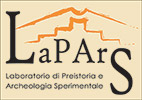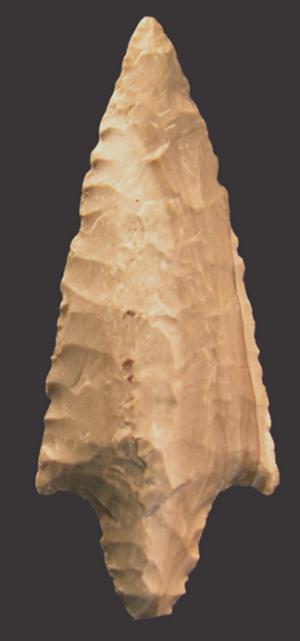Stone tool production
The study of lithic industries in the pre-Protohistoric archaeology of Sardinia remains a largely unexplored field, even though it often represents a good proportion of the available finds material and is lent to innovative types of analysis able to provide important information towards knowledge and research of socio-economic transformations in human groups.
Research so far conducted on stone tool production has been part of a broader project dedicated to the morpho-techno-functional analysis of craft production in the pre-Protohistoric era (Melis et alii 2011). An innovative aspect was introduced through the combination of a methodology rarely employed in Sardinia, integrated with analyses of craft production.
This aforementioned methodology falls into the category of technological studies in the field of ethnological research that were undertaken in France at the beginning of the 1900's, aimed at illustrating the profound relationships that existed between methods of production and forms of socio-economic organisation.
From this point of view technology is the "study of the procedures used to produce a tool or a weapon" the indispensable instrument of which is the concept of chaîne opératoire, that is, i.e. translated as operational sequence, which makes it possible to understand each transformation that the raw material underwent, from its procurement to discard.
With this in mind, the contribution of use wear analysis is also fundamental in the attempt to discern the function of each object, according to the traces visible on them, achievable through a comparison with the ethnographic data and the results of experimentation. This has been made possible thanks to the contribution made by LAMPEA (ex ESEP), the Laboratoire Méditerranéen de Préhistoire Europe Afrique - UMR 7269 of Aix en Provence.
The chosen method of analysis makes use of two distinct approaches: one known as the "low power approach" which is based on observations of stone artefacts through limited magnification (up to 100X), and the "high power approach" which makes use of a light optical microscope with bright field illumination (up to 900X).
The analyses of the lithic industry of the sites at Craviole Paderi (Sestu, Ca) and Su Coddu-Canelles (Selargius, Ca) is interwoven in the general context of the interpretative problems relating to the transition between the Late Neolithic and the Early Copper Age. In particular, in the case of Craviole Paderi the analysis of the exclusively obsidian stone tool production made it possible to identify two different methods and to chronologically divide them. While the second one can be placed in the Early Copper Age, through comparison to finds from Su Coddu-Canelles, Selargius, the first is datable to the Late Neolithic: the presence of a rough block and a still utilisable obsidian nucleus, as well as a large quantity of flakes from reduction and sharpening, is evidence that the raw material arrived at the site as a completely rough or only slightly pre-formed block. The in situ production was therefore applied to the manufacture of standardised articles, such as blades or other flakes, albeit with differentiations. This situation changes noticeably at the beginning of the Copper Age when, as illustrated by the analyses of implements coming from the structures at Su Coddu-Canelles, the contexts of this period are characterised by a strong tendency towards microlithism, a much weaker propensity for the production of smaller flakes, the instillation of chains of production and the adoption of very simple, unformulated operations.
The recent analyses conducted on the lithic production found in the domus de janas III and IV of S'Elighe Entosu at Usini, have made it possible to fill some important gaps in the current knowledge of stone artefacts from the Bronze Age. In particular their presence contributes on the one hand by confirming that the existence of stone tools in funerary contexts could not be exclusively related to the grave goods of the defunct but instead represented part of some activity and/or ritual closely related to the context itself, while on the other hand it is notable in itself that this material was still even being employed during the Bronze Age.
The economy and management of the raw material of the site, while remaining simple, showed signs of diversified behaviour. In fact two different supply channels have been identified: the first, of local provenance, was the preferred source, and was used for the supply of various types of flint, while the exogenous second saw the introduction of obsidian at Monte Arci and flint probably originating from Perfugas (SS). The aims of débitage was differentiated as were the technical sequences of direct production, principally in the production of flakes and small or medium sized blades in the case of locally sourced raw materials, and primarily for the creation of blades together with a minor production of smaller flakes in the case of obsidian.
The somewhat limited range of tools is represented by artefacts featuring irregular lateral removals. Those present included end-scrapers, side-scrapers, perforators etc made from the waste material of laminar débitage or on imported raw materials such as Perfugas flint or obsidian.

